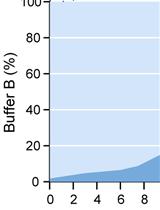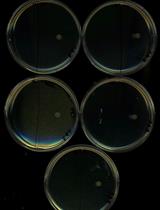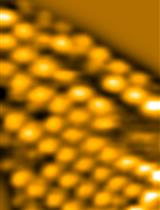- EN - English
- CN - 中文
Measurements of Free-swimming Speed of Motile Salmonella Cells in Liquid Media
液体培养基中活性沙门氏菌细胞自由游动速度的测定
发布: 2017年01月05日第7卷第1期 DOI: 10.21769/BioProtoc.2093 浏览次数: 9550
评审: Arsalan DaudiKanika GeraAnonymous reviewer(s)
Abstract
Bacteria such as Escherichia coli and Salmonella enterica swim in liquid media using the bacterial flagella. The flagellum consists of the basal body (rotary motor), the hook (universal joint) and the filament (helical screw). Since mutants with a defect in flagellar assembly and function cannot swim smoothly, motility assay is an easy way to characterize flagellar mutants. Here, we describe how to measure free-swimming speeds of Salmonella motile cells in liquid media. Free-swimming behavior under a microscope shows a significant variation among bacterial cells.
Keywords: Bacterial flagella (细菌鞭毛)Background
The flagellar motor of E. coli and Salmonella is powered by downhill proton translocation along proton motive force (PMF) across the cytoplasmic membrane (Morimoto and Minamino, 2014; Minamino and Imada, 2015). The rotational speed of the proton-driven flagellar motor is proportional to total PMF (Gabel and Berg, 2003). Therefore, measurements of free-swimming speeds of motile cells allow us not only to analyze motor performance of various mutants but also to examine whether there is a significant difference in total PMF under experimental conditions (Minamino et al., 2016).
Materials and Reagents
- 1.5 ml Eppendorf tubes
- Double-sided tape (NICHIBAN, catalog number: NW-5 )
- Glass slide (Matsunami Glass, catalog number: S1126 )
- 18 x 18 mm coverslip (thickness: 0.12-0.17 mm) (Matsunami Glass, catalog number: C018181 )
- Pipette tips
- Filter paper
- Salmonella SJW1103 strain (wild type for motility and chemotaxis) (Yamaguchi et al., 1984)
- Salmonella MMHI0117 strain [∆fliH-fliI flhB(P28T)] (Minamino and Namba, 2008)
- Bacto tryptone (BD, catalog number: 211705 )
- Potassium dihydrogenphosphate (Wako Pure Chemical Industries, catalog number: 164-22635 )
- Dipotassium hydrogenphosphate (Wako Pure Chemical Industries, catalog number: 164-04295 )
- Bacto yeast extract (BD, catalog number: 212750 )
- Bacto agar (BD, catalog number: 214010 )
- Sodium chloride (Wako Pure Chemical Industries, catalog number: 192-13925 )
- T-broth (TB) (see Recipes)
- L-broth agar plate (see Recipes)
Equipment
- Selection of single channel pipettes (1,000 µl, 100 µl) (Gilson, model: P-1000 , P-100 )
- Shaking incubator (30 °C, at 200 rpm) (TAITEC, model: BR-40LF )
- Centrifuge (able to hold 1.5 ml tube, spin at 6,000 x g) (TOMY SEIKO, model: MX-305 )
- Spectrophotometer (able to measure OD600) (GE Healthcare, model: GeneQuant 1300 )
Note: This product has been discontinued by the manufacturer. - Phase contrast microscope (Olympus, model: CH40 )
- 40x objective lens
- CCD camera (Hamamatsu Photonics, model: C5405 )
- Objective micrometer (10 µm/pitch)
- Hard-disk video recorder (Panasonic, model: DMR-XP25V )
Software
- Move-tr/2D (Library Co., Tokyo)
- Microsoft Excel (Microsoft)
Procedure
文章信息
版权信息
© 2017 The Authors; exclusive licensee Bio-protocol LLC.
如何引用
Readers should cite both the Bio-protocol article and the original research article where this protocol was used:
- Morimoto, Y. V., Namba, K. and Minamino, T. (2017). Measurements of Free-swimming Speed of Motile Salmonella Cells in Liquid Media. Bio-protocol 7(1): e2093. DOI: 10.21769/BioProtoc.2093.
- Minamino, T., Morimoto, Y. V., Hara, N., Aldridge, P.D. and Namba, K. (2016). The bacterial flagellar type III export gate complex is a dual fuel engine that can use both H+ and Na+ for flagellar protein export. PLoS Pathog 12(3): e1005495.
分类
微生物学 > 微生物细胞生物学 > 基于细胞的分析方法
细胞生物学 > 细胞运动 > 细胞运动性
您对这篇实验方法有问题吗?
在此处发布您的问题,我们将邀请本文作者来回答。同时,我们会将您的问题发布到Bio-protocol Exchange,以便寻求社区成员的帮助。
Share
Bluesky
X
Copy link













